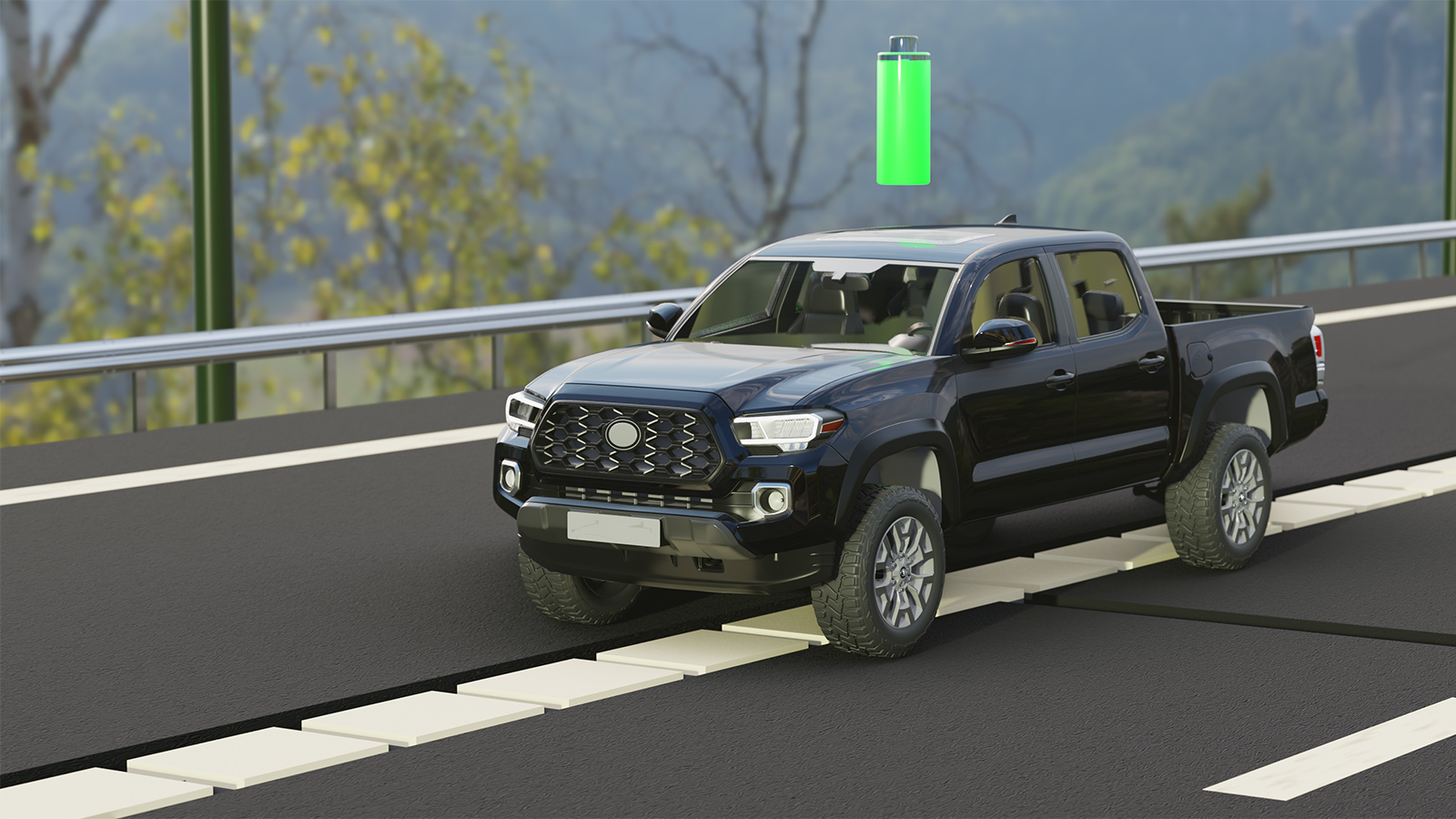When e-cars are charged by the road they drive on
Range remains a perennial issue in the discussion about e-mobility. Roads could use induction to charge vehicles in the future, but the technology for this is only in the testing stage.
Batteries remain the bottleneck in the rapid transformation from combustion engines to e-cars. Their weight increases energy consumption, capacity and charging time limit range, reuse and recycling have yet to be developed, and production errors can lead to fires. Therefore, enormous research efforts are going into the further development of this energy storage device.
On the other hand, electric trains have successfully demonstrated e-mobility without batteries since their invention. However, for individual car traffic, overhead lines – the transformation of road traffic into a vast autodrome – are ruled out. The solution: Electricity from the street, tapped by the e-car using induction. We are familiar with the principle from everyday life: Electric toothbrushes usually charge inductively, and mobile phones and other gadgets are increasingly drawing their power from inductive pads.
With e-cars and roads, the situation is more complicated. On the one hand, the distance between the road surface and the e-car has to be overcome, which reduces the amount of energy transferred. And on the other hand, the right technology must be found so that concrete can be magnetized to supply the cars driving on it with the energy they need.
Magnetic Roads
A new research institute at the renowned Purdue University in Indiana, Advancing Sustainability Through Powered Infrastructure for Roadway Electrification (ASPIRE), which the US National Science Foundation funds, wants to solve these challenges. The multi-year project uses technology for magnetizing concrete developed by the German company Magment. So-called MagPads make it possible to magnetize parts of the ground, which in turn can be converted into electricity by electric vehicles. This can be done over long distances while driving and stationary at “filling stations” where, for example, e-scooters are parked.
Small ferrite particles, recycled from e-scrap, are processed with cement or other material for the roads or floor covering (e.g., in industrial halls). This allows the current to be passed through and the respective covering magnetized. In the Purdue University project, plates of these MagPads are embedded a few centimeters below the road surface and, when combined, form a transmitter to transmit the energy.
On the one hand, the tests are stress tests in which the durability of this inductive highway is also tested for heavy trucks. On the other hand, it means overcoming the “air gap,” the distance between the transmitter on the road and the receiver on the vehicle, a considerable space of 25 to 40 centimeters. In the next two years, a test track with a length of a quarter of a mile (around 400 meters) is to be built, followed in four to five years by a longer inductive track on a regular freeway.
Chris Nelder, CEO of Magment, sees a more significant hurdle than in the development of the technology on the part of the manufacturers of electric cars. The auto industry is currently so busy with developing and producing batteries and software that another new technology is not a priority for them, Nelder explained in the New York Times. That’s why this project was primarily about demonstrating that this technology actually works.
Share post:




